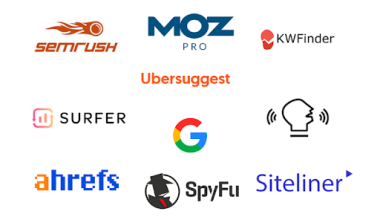Online advertising is becoming a critical component of any company’s success in the digital age. Google Ads stands out among the many online advertising platforms as a potent tool for directing targeted traffic and generating leads.
However, for online business owners, comprehending how to use Google Ads efficiently might be intimidating. We will lead you through the fundamental ideas, tactics, and best practices of Google Ads in this thorough manual, giving you the tools you need to fine-tune your campaigns and get the best possible outcomes.
Understanding Google Ads:
Google Ads, formerly known as Google AdWords, is an online advertising platform developed by Google. It allows businesses to create and display ads on Google’s search engine results pages (SERPs) and across its vast network of partner websites. Google Ads operates on a pay-per-click (PPC) model, where advertisers only pay when users click on their ads. Understanding the key concepts of Google Ads, such as ad rank, quality score, and bidding strategies, is essential to run successful campaigns.
Ad rank is one of the most important ideas to comprehend when learning about Google Ads. Your ad’s position on the search engine results page (SERP) is determined by its ad rank, which is influenced by a number of variables, including the size of your bid, your quality score, and the relevance of your ad. Striking a balance between aggressive bidding and making sure your ads are really relevant to the keywords you are targeting is crucial.
An additional crucial component of Google Ads is quality score. It is an evaluation given to each keyword. It is a score given to each term in your campaign depending on how relevant it is and how well your landing page performs. Better ad positions and reduced cost per click can result from a higher quality score. Focus on developing well-structured campaigns, pertinent ad groups, and landing pages that are in line with the user’s search intent if you want to raise your quality score.
The proper bidding strategy must be chosen in order to maximize your Google Ads campaigns. Google provides a number of bidding alternatives, including enhanced cost-per-click (eCPC), automated bidding, and manual bidding. Depending on your campaign’s objectives and spending limit, each technique has advantages. While automatic bidding uses machine learning algorithms to optimize offers in accordance with your objectives, manual bidding gives you complete control over your bids.
The proper people will see your adverts thanks in large part to targeting tools. You may target consumers with Google Ads based on their demographics, geography, hobbies, and even particular websites or apps. You may improve the relevancy of your advertising and raise your chances of generating quality leads by reducing the size of your audience.
Setting Up Your Google Ads Account:
In order to use Google Ads, you must first establish an account and configure your campaign. This entails picking your campaign objectives, deciding on your budget, deciding on your target market, and putting up additional campaign parameters. In order to ensure you have a strong foundation for your advertising efforts, Google Ads offers a user-friendly interface that walks you through the setup process step by step.
Keyword Exploration and Selection:
Keywords are the foundation of any successful Google Ads campaign. Conducting extensive keyword research allows you to uncover the search keywords that your target audience uses when seeking for similar items or services to yours. Tools like Google Keyword Planner can help you uncover appropriate keywords with a high search volume and low competition. Choosing the proper keywords allows you to reach the relevant people and increase the overall success of your adverts.
Creating Engaging Ad Campaigns:
It is critical to create engaging ads in order to attract the attention of potential buyers. Your ad copy should be short, interesting, and relevant to your target audience’s search intent. Ad extensions, such as call extensions or site link extensions, can further improve the visibility and impact of your adverts. Ad design and landing page optimization are both critical components in increasing conversions and driving targeted user actions.
Ad Performance Optimization:
Optimizing your Google Ads campaigns is a continuous process that requires monitoring, analyzing, and making data-driven modifications. Reviewing campaign performance indicators such as click-through rate (CTR), conversion rate, and cost per conversion on a regular basis allows you to find areas for improvement. Split testing ad variations, altering bidding tactics, and improving audience targeting are all optimization techniques that can help you consistently enhance the performance of your ads.
Tracking and Analyzing Results:
To analyze the efficacy of your campaigns, Google Ads includes strong analytics tools such as Google Analytics and conversion tracking. You can acquire useful insights into the return on investment (ROI) of your advertising efforts by measuring conversions and attributing them to certain keywords or ads. Analyzing this data allows you to identify successful methods and make informed judgments about how to allocate your budget.
Advanced Google Ads Strategies:
Once you’ve learned the fundamentals of Google Ads, it’s time to look at advanced tactics for taking your online advertising campaigns to the next level. These strategies entail utilizing more advanced features and techniques to improve ad performance and produce even greater results. Consider the following advanced strategies:
- Remarketing: You can target customers who have previously interacted with your website or app via remarketing. You can reinforce your brand, re-engage potential customers, and enhance conversions by showing personalized advertising to these users when they visit other websites or use apps within the Google Display Network. Segment your audience based on their online behavior, such as cart abandonment or specific product page visits, and develop targeted ad messaging to urge them to return.
- Dynamic Search Ads (DSA): DSA produces ad headlines and landing page URLs automatically based on the content of your website. This method is especially beneficial for websites that have a huge inventory or dynamic material. DSA campaigns can assist you in capturing more search inquiries and improving ad relevancy, so saving you time on keyword research and expansion. However, continuous monitoring and optimization are required to ensure that the created ads are in line with your campaign objectives.
- Ad Customizers: Ad customizers allow you to dynamically incorporate relevant information into your advertising, such as product prices, countdowns, or location-specific facts. This strategy instills a sense of urgency and customization, improving the likelihood of attracting clicks and conversions. For example, you can use ad customizers to show a countdown to a limited-time offer or the current pricing of a product.
- Audience Targeting: Advanced audience targeting options go beyond demographics and location. Use audience targeting options in Google Ads such as in-market audiences, affinity audiences, and custom intent audiences to reach users who are actively investigating or have expressed interest in products or services comparable to yours. These targeting options allow you to focus your ad spend on visitors who are more likely to convert, increasing the overall efficiency of your campaign.
READ NOW: The Top 10 Cryptocurrencies of 2023 You Should Know About
- Smart Bidding Strategies: Smart bidding employs machine learning algorithms to automatically change your bids in order to maximize your campaign goals. Target CPA (cost-per-acquisition), target ROAS (return on ad spend), and maximize conversions are some of the smart bidding tactics available in Google Ads. These tactics enhance your bidding decisions by taking into account different indications, such as device, location, and time of day, to help you reach your individual business objectives.
- Ad Extensions: Ad extensions supplement your advertising with additional information and features, making them more visible and engaging. Callout extensions, structured snippets, and promotion extensions are examples of advanced ad extensions. Using these extensions can increase the exposure of your ad, emphasize unique selling factors, and motivate users to take action. A/B Testing and
- Experimentation: Run A/B tests and experiments to continuously enhance your ad performance. To determine which combinations produce the best results, test different ad variations, landing page designs, bidding tactics, or targeting options. You may make informed judgments and adjust your efforts for optimal effectiveness by gathering data and assessing the results.






